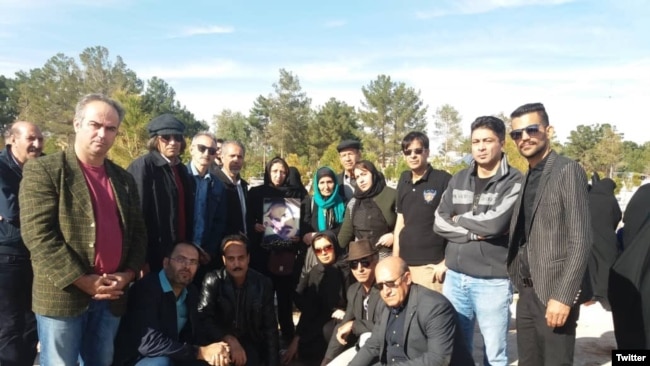Radiofarda – The body of a political prisoner who died while on hunger strike was buried on Friday under heavy surveillance of security forces in Qom, 127 kilometers (79 miles) south of Tehran.

Vahid Sayadi Nasiri died recently and the family was notified on Wednesday, December 12, after 60 days on hunger strike.
Several civil activists and former inmates of Sayadi Nasiri had traveled to Qom to attend his funeral.
Scores of security forces were also present at the ceremony.
Speaking to Radio Farda, Sayadi Nasiri’s sister, Elahe, said, “Plainclothes security personnel were closely watching the ceremony and followed us.”
Sayadi Nasiri had gone on hunger strike to protest “unbearable condition” of the prison, demanding his return to the political ward of Tehran’s Evin prison.
However, the prosecutor-general of Qom has insisted that Sayadi Nasiri’s was suffering from “liver malfunction” and taken to a hospital where he died seven days later.
Iranian prosecutors and prison authorities have little accountability to any independent body, especially when it comes to cases of political detainees. Deaths in prison are rarely investigated in a transparent manner and relatives or defense lawyers are usually kept in the dark.
The relatives were told to go to the “Behesht-i Masoumeh cemetery” and collect the body of their loved one.
Vahid Sayadi Nasiri was initially arrested in September 2015, and sentenced to eight years on charges of “insulting religious sanctities, including the Islamic Republic’s Supreme Leader, Ayatollah Ali Khamenei” and “propaganda against the state,” on his Facebook account.
Benefiting from an Iranian New Year pardon, he was released last March, after spending two and a half years behind bars.
However, his release was short-lived, and the Intelligence department’s agents in Qom arrested him again for the same charges last August.
Nasiri went on hunger strike in late October 2018 to protest being locked up with ordinary criminals which violated the Islamic Republic’s own regulations on the principle of separation of inmates.

Political Prisoner On Hunger Strike Dies In Custody
In a statement on December 13, State Department deputy spokesman Robert Palladino said Vahid Sayadi Nasiri, who died on December 12, had been “arbitrarily detained” by Iranian authorities after his arrest four months ago.
Nasiri had “no access to legal counsel, was held in inhumane conditions, and was charged with spurious national security offenses such as ‘insulting the Supreme Leader,'” the statement said.
The State Department statement said he was “just one of many more unjustly detained prisoners held at the mercy of the Iranian regime’s whims.”
“The United States condemns in the strongest possible terms the Iranian regime for its unceasingly flagrant human rights violations,” it said.
“We demand that the regime stops subjecting Iranians who are peacefully voicing their opinions to brutal conditions and slow deaths, and release all those unjustly imprisoned,” it added.
The statement referred to two other detainees, Farhad Meysami — who it said was also on hunger strike — and Nasrin Sotoudeh.
 Shabtabnews In this dark night, I have lost my way – Arise from a corner, oh you the star of guidance.
Shabtabnews In this dark night, I have lost my way – Arise from a corner, oh you the star of guidance.




